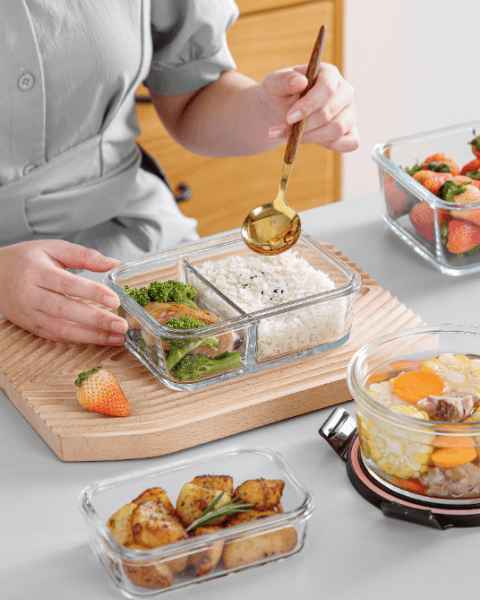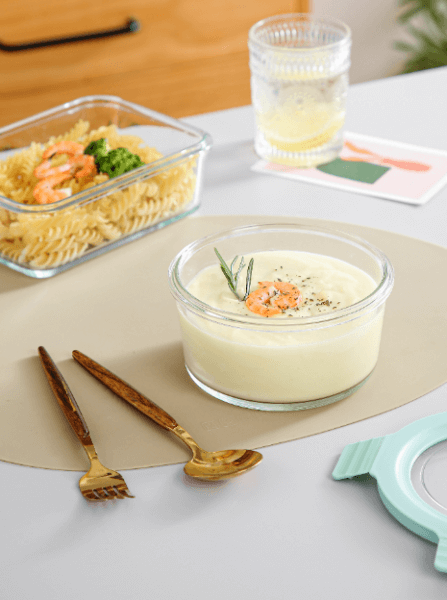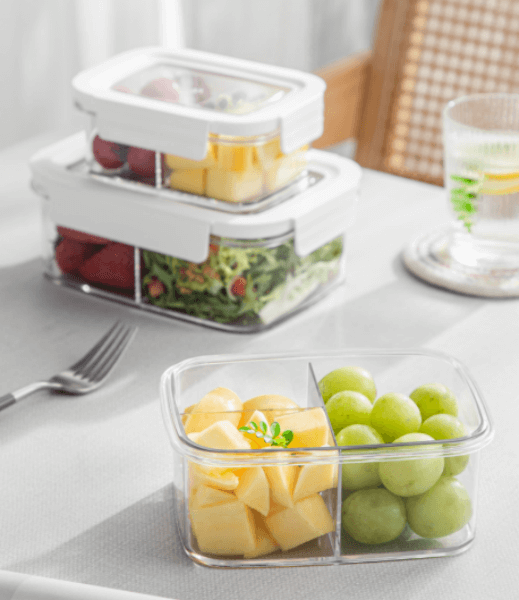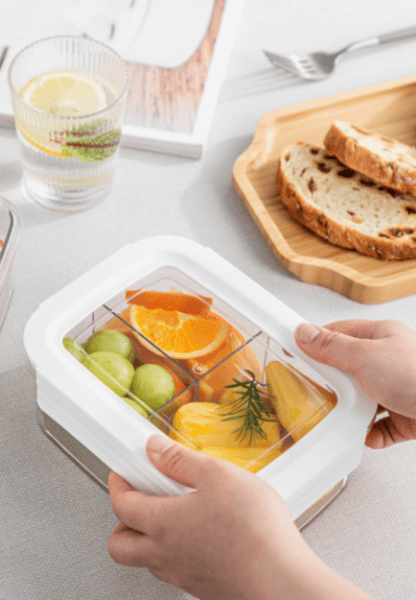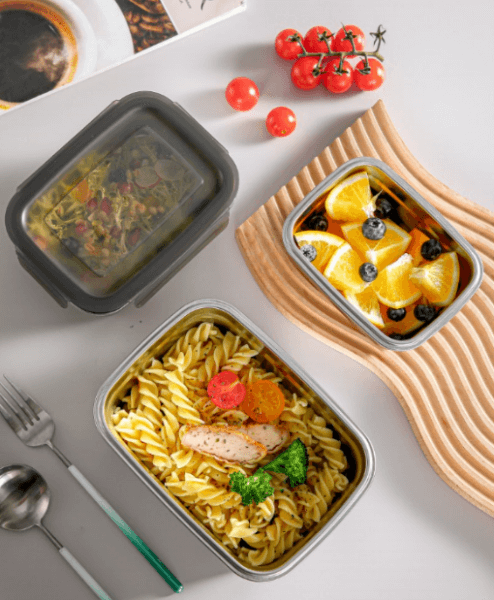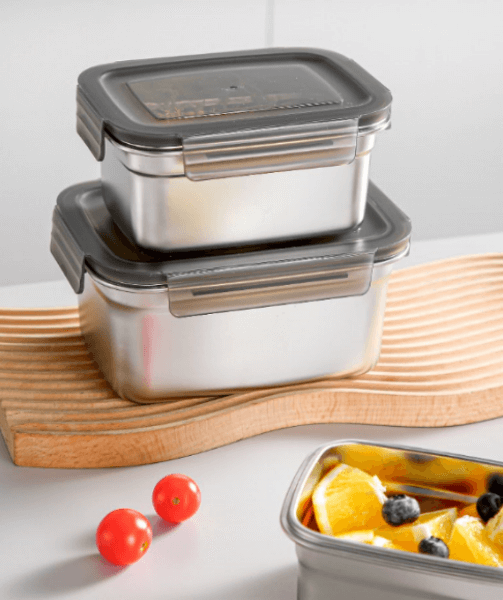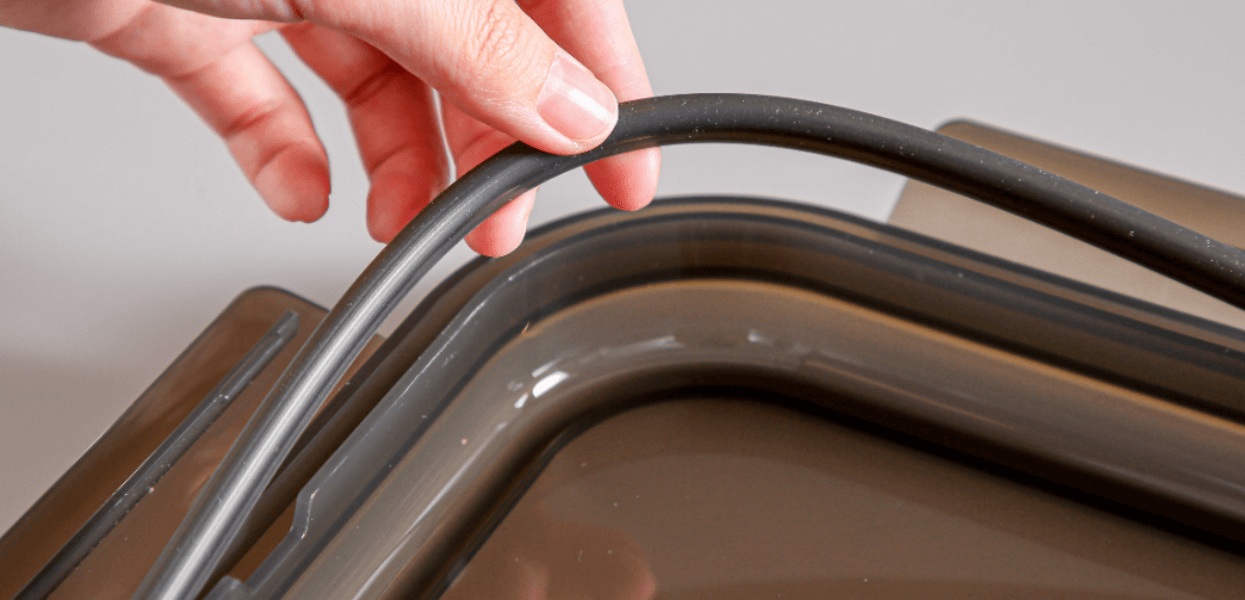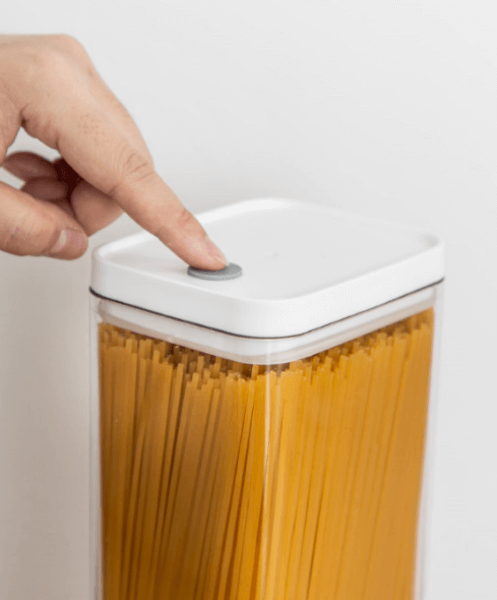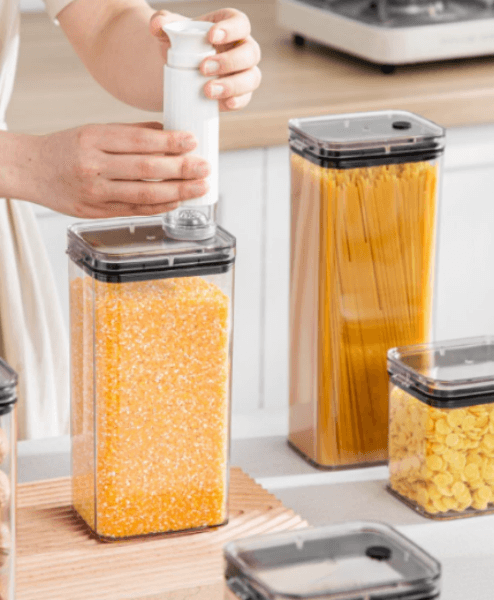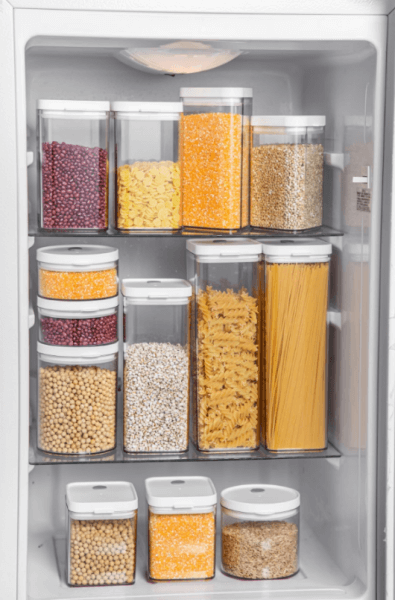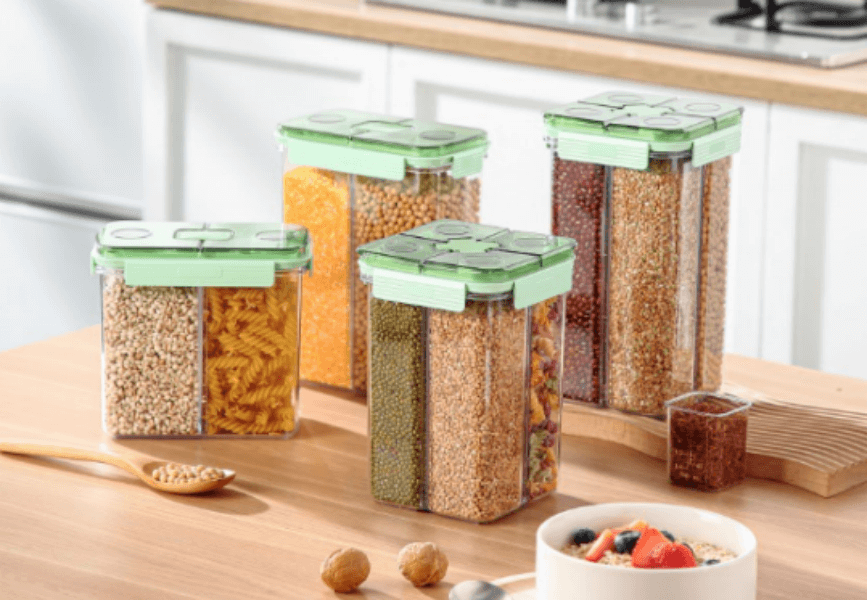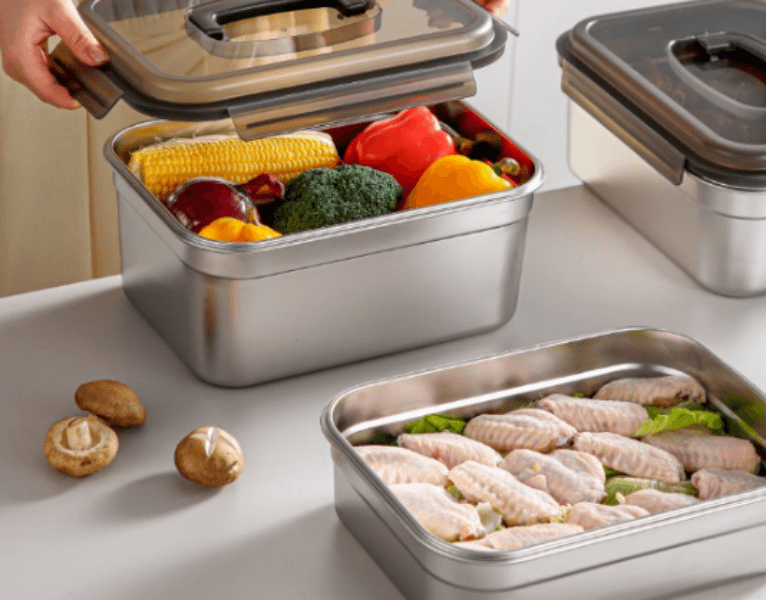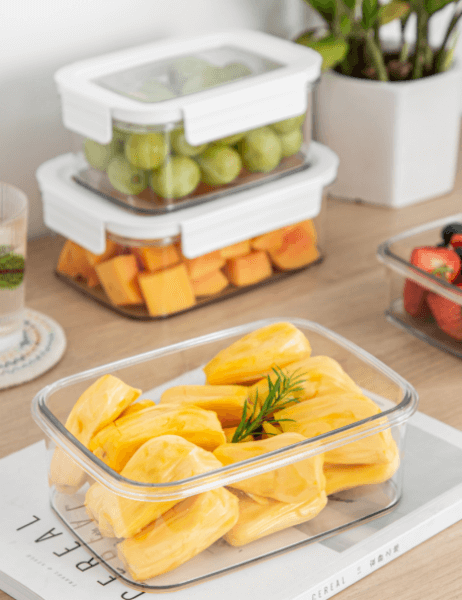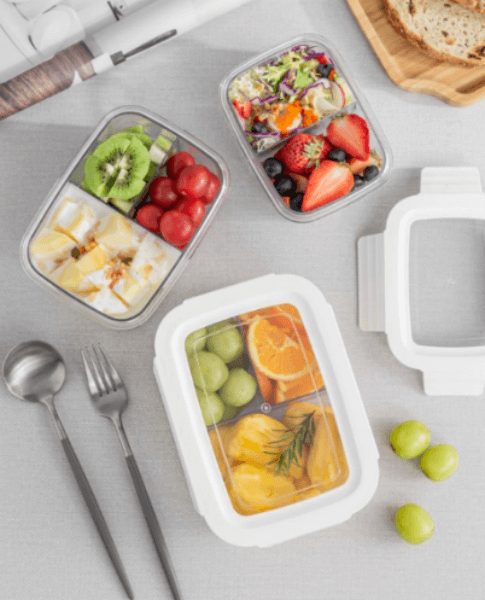Proper food storage is essential to maintaining the quality and safety of your food. Using the right storage containers and practices can prevent contamination, spoilage, and foodborne illnesses. This guide will cover key aspects of food storage safety, including choosing appropriate containers, proper labeling, and best practices for different types of food.
Choosing the Right Storage Containers
Materials
Glass: Glass containers are a great option as they are non-reactive, meaning they won’t leach chemicals into your food. They are also durable and can be used in the microwave, oven, and dishwasher. However, they can be heavy and breakable.
Plastic: When choosing plastic containers, look for those labeled BPA-free. BPA (Bisphenol A) is a chemical that can seep into food and has been linked to health issues. High-quality plastic containers are lightweight and convenient but may not be suitable for high-temperature uses
Stainless Steel: These containers are sturdy, non-reactive, and often come with airtight lids. They are ideal for both dry and wet foods but are not microwave-safe.
Silicone: Silicone bags and containers are flexible, reusable, and safe for both the freezer and microwave. They are an eco-friendly alternative to single-use plastics.
Features
• Airtight Seals: Containers with airtight seals prevent air and moisture from entering, keeping food fresher for longer.
• Clear Containers: Transparent containers allow you to easily see what’s inside, reducing the chances of food being forgotten and going bad.
• Stackable: Stackable containers save space in your pantry, fridge, or freezer.
Proper Labeling
Labeling your food storage containers is crucial for food safety and organization. Here are some tips:
• Date and Contents: Always write the date and contents on the container to keep track of how long the food has been stored.
• Use By Dates: Note the “use by” or “best before” dates to ensure you consume food within safe time frames.
• Rotation: Practice the FIFO (First In, First Out) method by placing newer items behind older ones.
Best Practices for Different Types of Food
Dry Goods
• Cereals and Grains: Store in airtight containers in a cool, dry place to prevent pests and moisture.
• Spices: Keep in tightly sealed containers away from heat and light to preserve their potency.
Refrigerated Foods
• Dairy Products: Keep dairy products in their original packaging or transfer them to airtight containers. Store them on the shelves, not the door, where temperatures are more consistent.
• Meat and Poultry: Store meat and poultry in their original packaging on the bottom shelf to prevent juices from contaminating other foods. Use within recommended time frames or freeze.
Frozen Foods
• Freezing: Use freezer-safe containers or bags to prevent freezer burn. Remove as much air as possible before sealing.
• Thawing: Always thaw food in the refrigerator, cold water, or the microwave, never at room temperature.
Fresh Produce
• Vegetables: Some vegetables need to be stored in the refrigerator (e.g., leafy greens), while others do better at room temperature (e.g., potatoes, onions). Use produce-specific storage containers or bags to extend freshness.
• Fruits: Store fruits like apples and berries in the refrigerator, while bananas and citrus fruits can be kept at room temperature.
Cleaning and Maintenance
• Regular Cleaning: Clean containers thoroughly after each use with hot, soapy water. Ensure they are completely dry before storing food.
• Inspect for Damage: Regularly check for cracks, chips, or warping, especially in plastic containers, as damaged containers can harbor bacteria.
• Odor Removal: Remove lingering odors from containers by washing with a mixture of water and baking soda or vinegar.
Conclusion
By choosing the right storage containers, properly labeling your food, and following best practices for different types of food, you can ensure that your food stays fresh and safe to eat. Implementing these food storage safety tips will help you reduce waste, save money, and protect your health.
Post time: Aug-02-2024
